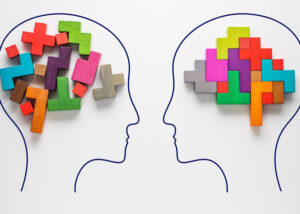
Good communication skills are vital in a family when you or one of the family members have ADHD in the hopes to make good decisions together, solve problems effectively, and promote a positive sense of well-being among family members. Use of sarcasm, ridicule, name calling, ignoring, making an annoyed face, looking incredulous, snickering, mocking, overgeneralizing, lecturing, not paying attention, interrupting, getting off the topic, ordering, hogging the conversation, threatening, laughing at, and making light of someone’s feelings are just a few of the many actions that could interfere with communication. Typically one person’s negative action leads to another person’s negative reaction and before you know it, an argument erupts, nobody listens to anyone, and positive communication breaks down.
Communicating well takes practice and effort and this is not something that comes naturally for individuals with ADHD. Below are some keys to good communication. These skills and techniques may seem strange and awkward at first. But if you stick with them, they will become natural in time. As an added bonus, you will improve all of your communication with others (inside and outside your family).
Active Listening for Adults with ADHD
-Active listening is a way of listening to others that lets them know you are working to understand the message they are sending.
-Make sure your body language conveys to them that you are interested and listening. You can make eye contact with them, turn your body toward them, and nod as they are talking to let them know you are listening.
-Reduce any distractions that will keep you from focusing on their message. Try to stop whatever you are doing that may distract you from their message—such as watching television or trying to read while the person is talking to you. You may need to tell them, “I will be better able to listen to you once I am done with ____. “ Trying to listen while doing other tasks usually does not allow one to clearly hear the message.
-Listen for the content and the feelings behind the words. Do not just listen to the content of what is being said. Listen for the feeling that the person is trying to convey to you. Are they expressing joy, sadness, excitement, or anger—either through their words or body language?
-When the person has finished talking, paraphrase back to them what you heard them saying. “What I am hearing from you is……”“It sounds like ….. was very upsetting for you.”
-Do not offer advice to the person. When we offer advice—especially when it was not asked for—this often shuts down communication. The person first needs to know that you have understood them and that they have sent their message clearly to you.
Family Communication
More people = more complex communication and with more people especially if one or more has ADHD there probably will be more opportunities for communication and the greater chances for a conflict to arise. It is important that families establish good lines of communication so that all family members can feel heard and understood and conflicts can be resolved. Generating “win/win solutions” challenges us to be creative in developing solutions to problems—rather than focusing on our own needs or wants. To come up with “win/win solutions,” family members need good communication skills—so that everyone’s point of view and suggestions are expressed clearly and heard by the other family members. Here are some ways to come up with “win/win” solutions:
-It is important that all persons experiencing the conflict be included—even if this means calling a 10-minute “time out” so people can calm down. (Set the kitchen timer, and have people run around the block—or use some similar positive way to help people cool down.)
-Use neutral language. This means that family members may not name-call or pass judgment on other’s ideas or needs.
-Each person’s request needs to be considered. Each person’s opinion needs to be heard.
-Everyone needs to use their active listening skills (outlined before)—paraphrasing the points of view of other family members.
-Once everyone feels heard and understood, then the process can move to generating new solutions to resolve the conflict.
-The group should generate as many new solutions to the problem as they can— focusing on how to resolve the problem, not just how to meet one’s own needs.
-Keep a list of all the solution ideas that are generated.
-Some of the solutions can be silly and outrageous. Humor helps us relax our minds, which can help us do our best thinking.
-When all the possible solutions have been generated, go through each idea and discuss it. Would this solve the problem? Could we actually do it? How hard or easy would it be to do this?
-The group can vote on the best solution. If only 2 people are involved, then they must agree on a solution before the issue is considered resolved.